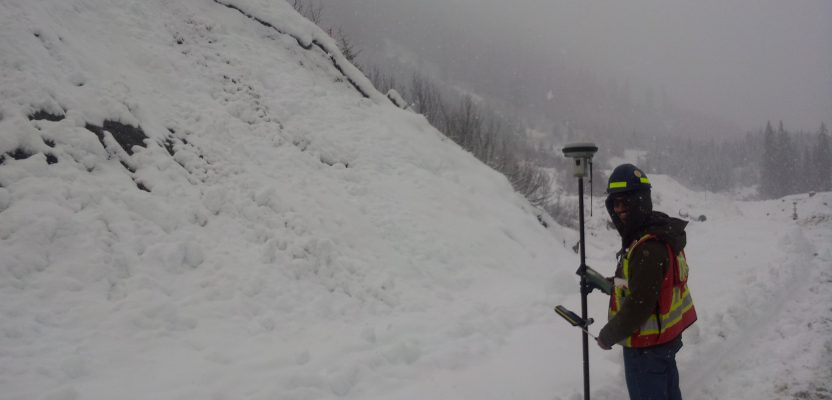Above image: A surveying job made comfortable: Measuring a steep terrain from a safe ground location in the treacherous mountains of beautiful northern British Columbia, Canada.
The importance of protecting our lifestyle.
In this article, for the sake of brevity the concepts of occupational health and safety are referred to by the word “safety.” The word “surveyor” includes all survey staff, whether field or office.
When the survey crews are out at work, what are our expectations? An excellent day in the field: quality surveying work performed at a productive pace to the satisfaction of all, including the client. No downtime, 100% billable.
Being the leaders that we are in our professional organizations, the safety of our crews—from their departure to their return at the office—is equally important to us.
Quick poll. Did you consider safety as an expectation before reading the line about it above?

Adventurous Nature
Why are people attracted to a career in surveying? Along with an interest for mathematics and technology, many people are attracted by the adventurous lifestyle that comes with the job: working long hours outdoors in all types of terrains, in varied weather conditions, maybe seeing wildlife; going to new places and experiencing new cultures; using trucks, quads, boats, snowmobiles; working independently away from the office, stepping into the unknown, solving problems, making decisions.
This job provides a lot of adventures, independence, and freedom. Those are among the reasons I got in this line of work. “Wow—what a cool job!”
From one worksite to the next, out on adventures, we surveyors come across countless hazards of all types on a regular basis. Major ones, too.
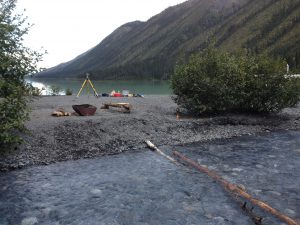
A survey worksite away from civilization; the encountered grizzly bear is missing from the picture.
As leaders, we must step up and protect our workforce from taking unnecessary risks that may result in accidents. Make it clear. At work, adventures become regulated, controlled.
Safety laws kick in.
This is a much-needed reminder for all of us adventurers, free-spirited survey enthusiasts, data-gatherers trekking with our technology and our machetes, singing the praises of Danielle Boone.
Even though our crew is camping at a remote site on a beautiful island out on a job, our crew is not on a camping trip. The crew is at a work camp. The safety laws apply.
At home, if Joe wants to go canoeing without a lifejacket on his back, it’s not a great idea, but that’s Joe’s decision, his life, his call. However, at work, Joe will wear an approved flotation device in that canoe. The safety laws apply.
Enjoy the adventures of surveying safely. Apply the safety laws. It’s an easy transfer of knowledge for us. We know controls, we use them in every job. Add and keep safety to the mindset. Control your work; control your workplace.
The Surveyor on the Edge
Some of you may recall seeing in a magazine about a decade ago a certain full-page promotion from a leading geospatial equipment manufacturer. The advertisement presented a picture of a survey scene with a stunning mountain countryside view. Standing on the narrow and thin overhang portion of a cliff face was a surveyor at work, reaching out with his GNSS rover to take a shot at the crest line, ready to plunge to his demise should something unexpected happen.
Along with the picture was a caption about the benefits of the GNSS system. What about the obvious and in-your-face situation of imminent danger of a fall from that height? No issues. Yup, just another day at work in the intrepid and spirited life of a surveyor, doing what it takes to get the data.
Yes, over the last decade times have changed, and the marketing team today would likely not use a promotion with such obvious disregard of that basic safety rule regarding work at heights.
However, cultures at work do not change quickly. Old habits are hard to break.
This “Surveyor on the Edge” anecdote provides us with a reminder that unhealthy and unsafe cultural assumptions and espoused values in our profession can place us and others in situations with severe and potentially life-threatening consequences. Safety mechanisms can protect us from those.
Our Duty: To Protect
What do the safety laws say?
Simply put: it is our duty to protect the health and safety of ourselves, our crews, the other workers at the site and anybody else who may be affected by our work. The acts, regulations, codes, etc. are route maps that we use to help us meet that duty within our own specific legal jurisdictions.
Please remember: safety laws are not extraordinary, nor are they extreme writings or gear-jamming tools intended to keep us from getting the job done. Au contraire, safety laws are very reasonable, easily understood, and applicable. With the right attitude, integrating them into work processes is not a difficult endeavor. Plenty of successful and profitable companies do so. Kudos to their management teams for leading the way.
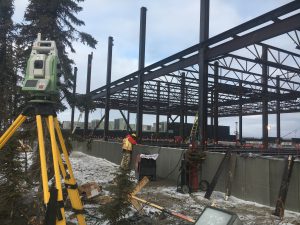
A surveyor checks grid lines at a new building. Different worksite, different hazards.
Caring for My Survey Crew
If I am sending a crew out on a job, of course it’s my job to do all that’s possible to protect them. I am in charge and have the knowhow, the experience, the access, and the control of the resources and work order.
Among other things, I better make sure that: • hazards have been assessed, and if they can’t be eliminated, adequate controls are put in place; • resources (time, equipment, crew size) are allocated properly; • the crew has qualifications, training, and experience for the job; • a system is in place for the unexpected situations that the work may bring; and • an emergency preparedness plan, tested and functional, is readily available should something go wrong.
Consider safety as early as when you start working on the cost estimate. Create, collaborate, and share with your crew the best work plan, intelligently built and with equal consideration for safety, quality, and productivity.
Protect your surveyors and provide them with all they need to get it done. Set them up for success.
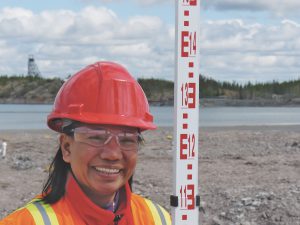
We must protect the health and safety of our organizations’ greatest asset.
Compliance? How about Excellence!
We often hear the word “compliance” in safety talks. As an organization leader, if your aim is strictly to achieve compliance, I invite you to realign your zenith angle. Imagine your son or daughter going into an exam and telling you: “It’s okay, it’s cool, I only need a 50% to pass.”
If a similar benchmark of mediocrity, bare-minimum being the objective, is inadvertently promoted at your office regarding safety, what effects does it have on your employees? How about your clients?
Yes, compliance to safety laws is needed. It is paramount. However, compliance should be regarded as one of the attributes of your strong health and safety culture. Align safety with the rest of your surveying business model—go for excellence!
Be a Mentor; Be a Safety Leader
A satisfying and rewarding aspect of surveying is the culture of mentoring that exists in our profession. The experienced and seasoned surveyors who share adventures, stories, knowledge, and skills with the younger generation are one of the ways that the profession continues to grow with passion.
Being a mentor also means being in tune with the times and not stuck in nostalgia. Actively, genuinely, and steadily promote safety in your survey operations. Be the best safety leader you can be.
Young surveyors are passionate about their career. Their receptors are set on high gain, their processors are powerful, and their memory large. Words and actions of their peers have long-lasting effects.
Take this great opportunity to positively and intelligently influence, guide, and shape the minds of your mentees in matters of safety. That’s the right thing to do.
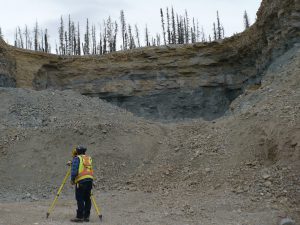
Circa 2008, a surveyor safely surveys a quarry with a reflectorless total station.

